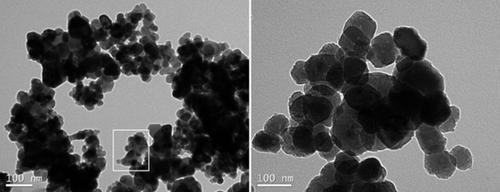当前位置:
X-MOL 学术
›
Microsc. Res. Tech.
›
论文详情
Our official English website, www.x-mol.net, welcomes your
feedback! (Note: you will need to create a separate account there.)
Effect of the addition of nanoparticles of CaCO3 and different water‐to‐powder ratios on the physicochemical properties of white Portland cement
Microscopy Research and Technique ( IF 2.0 ) Pub Date : 2020-10-13 , DOI: 10.1002/jemt.23617 Cleonice da Silveira Teixeira 1 , Jessica Coelho Wasielewsky 1 , Giovanna Slongo Santos 1 , Anarela Bernardi 1 , Eduardo Antunes Bortoluzzi 1 , Lucas da Fonseca Roberti Garcia 1
Microscopy Research and Technique ( IF 2.0 ) Pub Date : 2020-10-13 , DOI: 10.1002/jemt.23617 Cleonice da Silveira Teixeira 1 , Jessica Coelho Wasielewsky 1 , Giovanna Slongo Santos 1 , Anarela Bernardi 1 , Eduardo Antunes Bortoluzzi 1 , Lucas da Fonseca Roberti Garcia 1
Affiliation

|
The addition of calcium carbonate nanoparticles (nano‐CaCO3) accelerates the hydration of Portland cement improving its mechanical properties. Conversely, nano‐CaCO3 addition leads to reduction in the water required during initial PC hydration. Therefore, the use of a correct water‐to‐powder ratio is fundamental for manipulating this hydraulic cement. This study evaluated the effect of nano‐CaCO3 addition and different water‐to‐powder ratios on the physicochemical properties of white Portland cement (WPC). WPC was associated to different concentrations of nano‐CaCO3, and the following experimental groups were created: G1a (no nano‐CaCO3); G2a (0.5% nano‐CaCO3), G3a (1% nano‐CaCO3), G4a (2% nano‐CaCO3), and G5a (5% nano‐CaCO3). The setting‐time (ST), compressive strength (CS), dimensional change (DC), solubility (S), and pH were assessed (24 hr and 30 days). Next, WPC + 5% nano‐CaCO3 was manipulated varying the water‐to‐powder ratio: G1b (WPC/0.33 ml); G2b (WPC/nano‐CaCO3/0.33 ml); G3b (WPC/0.29 ml); G4b (WPC/nano‐CaCO3/0.29 ml); G5b (WPC/0.26 ml); and G6b (WPC/nano‐CaCO3/0.26 ml). The tests were repeated. The data analysis (2‐way ANOVA and Tukey test, α = 5%) demonstrated that ST was shorter for samples containing nano‐CaCO3 (p < .05). Reduction in CS was observed for all groups at 30 days, except G5a, G2b, and G6b (p < .05). DC and S had no statistical difference among groups (p > .05) independently of nano‐CaCO3 water‐to‐powder ratio. After 30 days, there was significant reduction in pH for G3a and G6b (p < .05). The different concentrations of nano‐CaCO3 and water‐to‐powder ratios affected the physicochemical properties of WPC, especially the setting‐time and compressive strength.
中文翻译:

添加碳酸钙纳米颗粒和不同水灰比对白硅酸盐水泥理化性质的影响
添加碳酸钙纳米颗粒(nano-CaCO 3)可以加速硅酸盐水泥的水合作用,从而改善其机械性能。相反,添加纳米CaCO 3可减少初始PC水合过程中所需的水量。因此,使用正确的水粉比是处理这种水硬性水泥的基础。这项研究评估了添加纳米CaCO 3和不同水灰比对白色硅酸盐水泥(WPC)的理化性质的影响。WPC与不同浓度的nano-CaCO 3相关,并创建了以下实验组:G1a(无nano-CaCO 3);G2a(0.5%纳米CaCO 3),G3a(1%纳米CaCO3),G4a(2%nano-CaCO 3)和G5a(5%nano-CaCO 3)。评估了凝固时间(ST),抗压强度(CS),尺寸变化(DC),溶解度(S)和pH(24小时30天)。接下来,通过改变水粉比:G1b(WPC / 0.33 ml)来控制WPC + 5%纳米CaCO 3。G2b(WPC /纳米CaCO 3 /0.33毫升); G3b(WPC / 0.29毫升); G4b(WPC / nano-CaCO 3 /0.29 ml); G5b(WPC / 0.26毫升); 和G6b(WPC / nano-CaCO 3 /0.26 ml)。重复测试。数据分析(双向方差分析和Tukey检验,α = 5%)表明,含有纳米CaCO 3(p <.05)。除G5a,G2b和G6b外,所有组在第30天的CS均降低(p <.05)。DC和S在各组之间无统计学差异(p > .05),与nano-CaCO 3水粉比无关。30天后,G3a和G6b的pH值明显降低(p <.05)。纳米CaCO 3浓度和水粉比的不同会影响WPC的理化特性,特别是凝固时间和抗压强度。
更新日期:2020-10-13
中文翻译:

添加碳酸钙纳米颗粒和不同水灰比对白硅酸盐水泥理化性质的影响
添加碳酸钙纳米颗粒(nano-CaCO 3)可以加速硅酸盐水泥的水合作用,从而改善其机械性能。相反,添加纳米CaCO 3可减少初始PC水合过程中所需的水量。因此,使用正确的水粉比是处理这种水硬性水泥的基础。这项研究评估了添加纳米CaCO 3和不同水灰比对白色硅酸盐水泥(WPC)的理化性质的影响。WPC与不同浓度的nano-CaCO 3相关,并创建了以下实验组:G1a(无nano-CaCO 3);G2a(0.5%纳米CaCO 3),G3a(1%纳米CaCO3),G4a(2%nano-CaCO 3)和G5a(5%nano-CaCO 3)。评估了凝固时间(ST),抗压强度(CS),尺寸变化(DC),溶解度(S)和pH(24小时30天)。接下来,通过改变水粉比:G1b(WPC / 0.33 ml)来控制WPC + 5%纳米CaCO 3。G2b(WPC /纳米CaCO 3 /0.33毫升); G3b(WPC / 0.29毫升); G4b(WPC / nano-CaCO 3 /0.29 ml); G5b(WPC / 0.26毫升); 和G6b(WPC / nano-CaCO 3 /0.26 ml)。重复测试。数据分析(双向方差分析和Tukey检验,α = 5%)表明,含有纳米CaCO 3(p <.05)。除G5a,G2b和G6b外,所有组在第30天的CS均降低(p <.05)。DC和S在各组之间无统计学差异(p > .05),与nano-CaCO 3水粉比无关。30天后,G3a和G6b的pH值明显降低(p <.05)。纳米CaCO 3浓度和水粉比的不同会影响WPC的理化特性,特别是凝固时间和抗压强度。











































 京公网安备 11010802027423号
京公网安备 11010802027423号